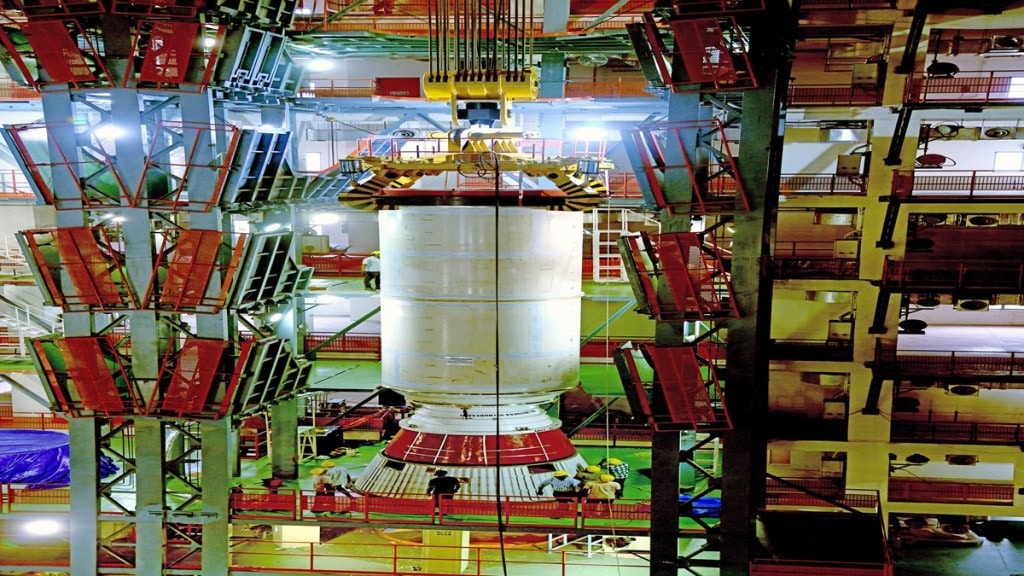India’s Gaganyaan mission sees a new development. NASA has officially started the assembly of the Human-Rated LVM3 (HLVM3) rocket. The HLVM3 will be used for the first un-crewed flight of the Gaganyaan program, which aims to eventually send Indian astronauts into space.
The first major phase of the HLVM3 assembly was completed today, i.e. December 18, 2024 at ISRO’s SDSC-SHAR center, where the nozzle end segment of the S200 solid rocket motor were stacked. This marks the official launch campaign for the HLVM3-G1/OM-1 mission, which will test vital components and systems for India’s manned space missions.
The HLVM3 is a human-rated version of the LVM3 rocket, developed with enhanced safety features designed specifically for carrying astronauts. This includes a Crew Escape System (CES), which ensures that the Crew Module (CM) can be safely ejected in the event of an emergency. The rocket is a three-stage vehicle capable of carrying a payload of about 10 tonnes to Low Earth Orbit (LEO), and it is equipped with cutting-edge technology to ensure the safety of astronauts during their ascent into space.
This move is a continuation of the progress made during the LVM3-X/CARE mission, which took place in 2014. The LVM3-X mission validated crucial flight technologies and re-entry mechanisms for the Crew Module, providing valuable insights that have played a pivotal role in ISRO’s human spaceflight preparations. The LVM3 has since completed several successful launches, further proving its reliability.
The Gaganyaan program is set to be the key milestone for ISRO, with the first un-crewed flight scheduled to test the entire system. The Crew Module and associated systems are undergoing final checks at various ISRO centers. Once operational, the Gaganyaan mission will include the launch of Indian astronauts aboard the HLVM3 rocket, marking India’s entry into the league of countries capable of human space exploration.
ISRO’s long-term vision extends beyond the Gaganyaan mission. The experience gained from this program will play a crucial role in the development of the Bharatiya Antariksh Station (BAS), a proposed space station for India. With this in mind, the successful assembly and launch of the HLVM3 rocket will lay the foundation for future human spaceflight endeavors, helping to solidify India’s position in the global space race.
The integration of the Crew Module is currently happening at VSSC (Vikram Sarabhai Space Centre), and the Service Module is being integrated at URSC (U R Rao Satellite Centre). ISRO’s continued dedication to safety, precision, and innovation reflects its vision to propel India’s space capabilities to new heights.

